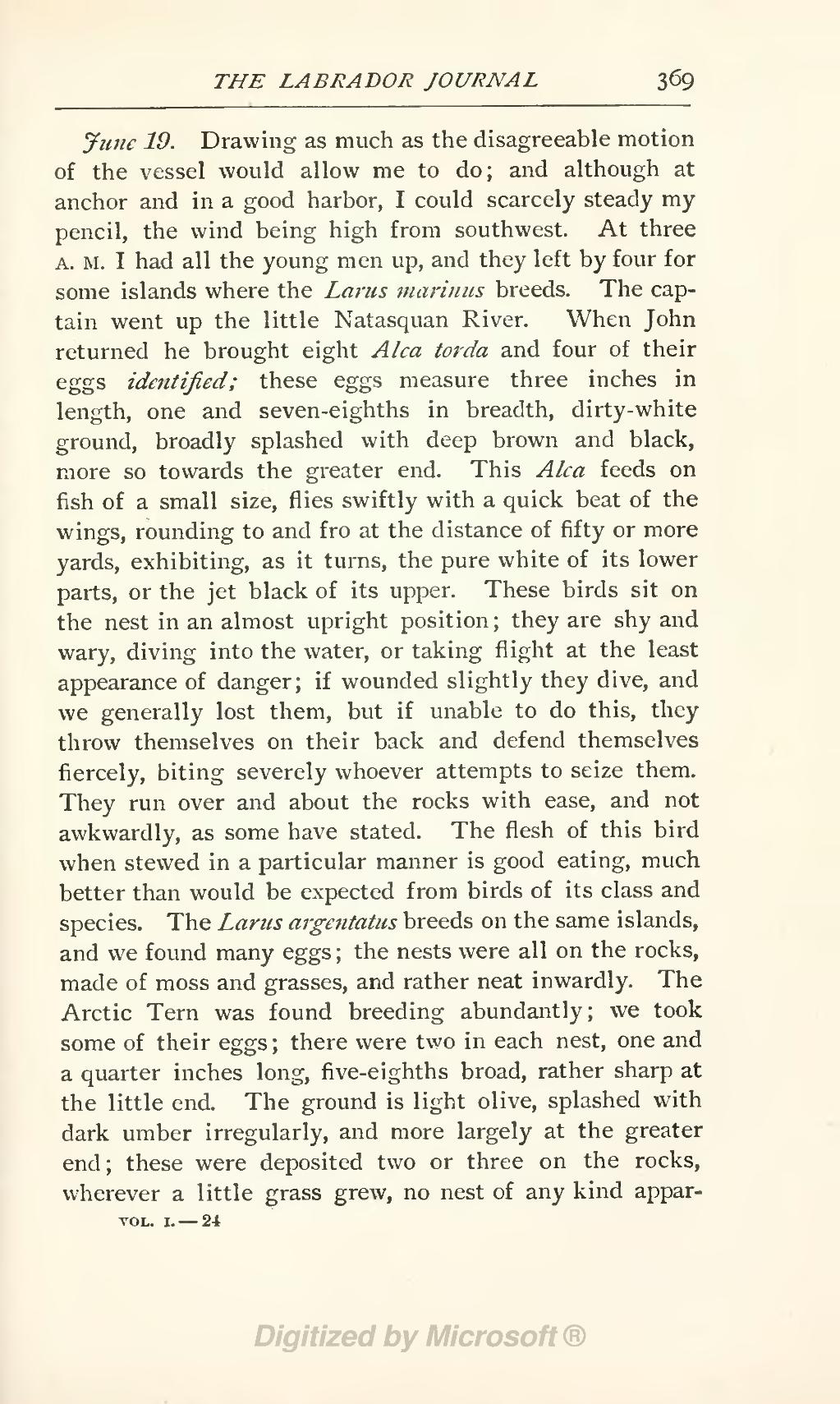June 19. Drawing as much as the disagreeable motion of the vessel would allow me to do; and although at anchor and in a good harbor, I could scarcely steady my pencil, the wind being high from southwest. At three A. M. I had all the young men up, and they left by four for some islands where the Larus marinus breeds. The captain went up the little Natasquan River. When John returned he brought eight Alca torda and four of their eggs identified; these eggs measure three inches in length, one and seven-eighths in breadth, dirty-white ground, broadly splashed with deep brown and black, more so towards the greater end. This Alca feeds on fish of a small size, flies swiftly with a quick beat of the wings, rounding to and fro at the distance of fifty or more yards, exhibiting, as it turns, the pure white of its lower parts, or the jet black of its upper. These birds sit on the nest in an almost upright position; they are shy and wary, diving into the water, or taking flight at the least appearance of danger; if wounded slightly they dive, and we generally lost them, but if unable to do this, they throw themselves on their back and defend themselves fiercely, biting severely whoever attempts to seize them. They run over and about the rocks with ease, and not awkwardly, as some have stated. The flesh of this bird when stewed in a particular manner is good eating, much better than would be expected from birds of its class and species. The Larus argentatus breeds on the same islands, and we found many eggs; the nests were all on the rocks, made of moss and grasses, and rather neat inwardly. The Arctic Tern was found breeding abundantly; we took some of their eggs; there were two in each nest, one and a quarter inches long, five-eighths broad, rather sharp at the little end. The ground is light olive, splashed with dark umber irregularly, and more largely at the greater end; these were deposited two or three on the rocks, wherever a little grass grew, no nest of any kind appar-
